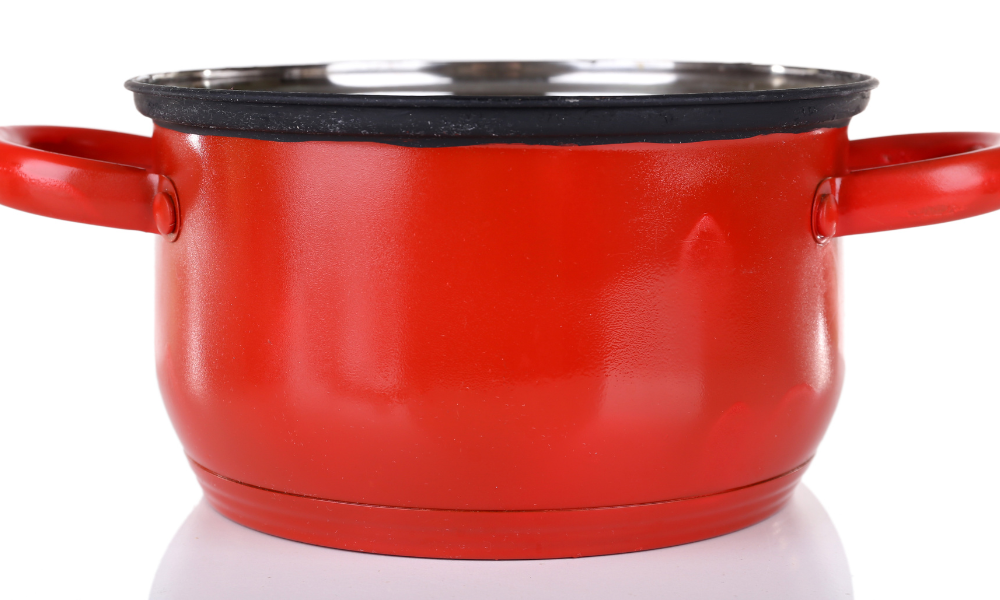Enamel cookware, with its vibrant colors and durable construction, has become a staple in many kitchens around the world. Whether you have a cherished collection of vintage enamelware or a set of modern enamel-coated pots and pans, proper cleaning and maintenance are essential to preserve their beauty and functionality. In this guide, we will delve into the best practices for cleaning enamel cookware, ensuring it stays in top condition for years to come.
Understanding Enamel Cookware

Before diving into the cleaning process, it’s important to understand what enamel cookware is and how it differs from other types of cookware. Enamelware typically consists of a metal base—such as cast iron or steel—coated with a layer of enamel, which is essentially melted glass powder. This enamel coating provides a smooth, non-stick surface that is resistant to rust and corrosion.
Specialty Cleaners
While mild dish soap works well for general cleaning, there are also specialty cleaners designed specifically for enamel cookware. These cleaners are formulated to effectively remove stains and maintain the enamel’s integrity without causing damage.
Natural Cleaning Solutions
For those who prefer natural cleaning solutions, ingredients like baking soda, white vinegar, lemon juice, and salt can work wonders on enamel cookware. They are gentle yet effective at removing stains and odors without harsh chemicals.
Avoiding Discoloration
Enamel cookware can sometimes develop discoloration, especially when exposed to certain foods or cooking techniques. To prevent this, avoid cooking acidic or strongly-colored foods for extended periods in enamel cookware, as they can cause staining. Additionally, using lower heat settings and avoiding high-heat cooking methods can help preserve the enamel’s color.
Storing with Care
Proper storage is essential for maintaining the condition of enamel cookware. Consider investing in protective storage solutions such as padded dividers or individual cloth bags to prevent scratches and chips when storing your cookware.
Repairing Minor Damage
If you notice minor chips or scratches in the enamel coating, there are repair kits available that can help touch up the damaged areas. These kits typically contain enamel paint or filler that can be applied to the damaged area to restore its appearance and protect it from further damage.
Seasoning Enamel-Coated Cast Iron
While traditional cast iron cookware requires seasoning to maintain its non-stick properties, enamel-coated cast iron does not require seasoning in the same way. However, applying a thin layer of oil to the cooking surface can help prevent sticking and maintain the enamel’s smooth texture over time.
Avoiding Thermal Shock
Enamel cookware is susceptible to thermal shock, which occurs when the cookware is subjected to rapid changes in temperature. To avoid this, avoid placing hot enamel cookware directly on cold surfaces or immersing it in cold water immediately after cooking. Instead, allow the cookware to cool gradually to room temperature before cleaning or storing.
Long-Term Care
Regularly inspect your enamel cookware for signs of wear and tear, such as chips, cracks, or rust. Addressing any issues promptly can help prevent further damage and prolong the lifespan of your cookware. Additionally, consider rotating your cookware regularly to ensure even wear and tear over time.
Conclusion
Proper cleaning and maintenance are crucial for preserving the beauty and functionality of enamel cookware. By following these tips and techniques, you can ensure that your enamel pots and pans remain in top condition for years to come, allowing you to continue creating delicious meals with confidence. With a little care and attention, your enamel cookware will be a cherished part of your kitchen for generations to come.
